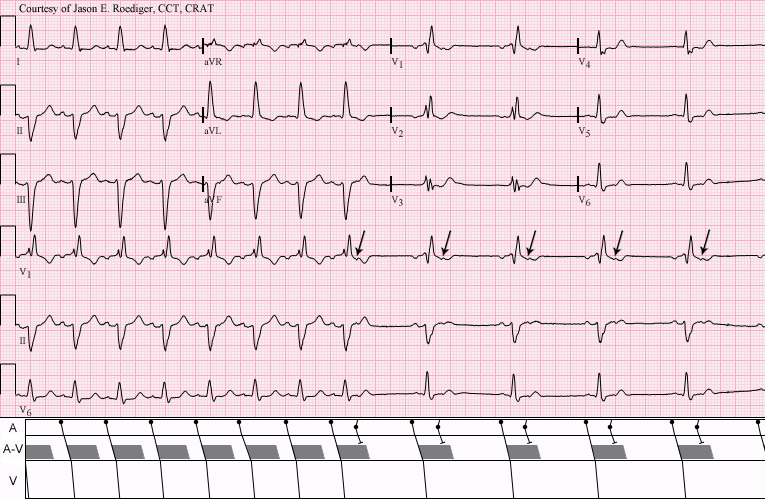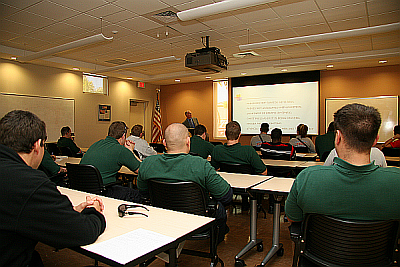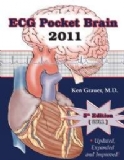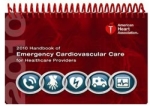All our content is FREE & COPYRIGHT FREE for non-commercial use
Please be courteous and leave any watermark or author attribution on content you reproduce.
Recent blog posts
- NON-CONDUCTED PAC
- ATRIAL TACHYCARDIA WITH PARTLY ABERRANT CONDUCTION
- VENTRICULAR TACHYCARDIA, ATRIAL FIBRILLATION AND ABERRANT CONDUCTION
- WHY IS THIS A PVC?
- INTERESTING HOLTER-STRIP
- ATRIAL FIBRILLATION
- NONSUSTAINED VT
- PVCS and MORE
- For Fans of Dr Jerry W Jones
- Sick Sinus Syndrome
- AV Nodal Reentry Tachycardia on a Holter Monitor Strip
- PVCs With VA Conduction
- PVCs And Their Relationship to P waves, Some Examples
- Complete Right Bundle Branch Block With AV Block and More
- An Interesting Holter Strip




 Do you ever feel confused by pacemaker rhythms? You are not alone! Pacemakers are electronic devices, and have rapidly evolved in their capabilities. Often, we call the manufacturer's representative to come and interrogate a patient's pacemaker to determine if it is behaving as it was programmed. Without knowing the programming of the individual pacemaker, it can be hard to evaluate the patient's rhythm.
Do you ever feel confused by pacemaker rhythms? You are not alone! Pacemakers are electronic devices, and have rapidly evolved in their capabilities. Often, we call the manufacturer's representative to come and interrogate a patient's pacemaker to determine if it is behaving as it was programmed. Without knowing the programming of the individual pacemaker, it can be hard to evaluate the patient's rhythm.




